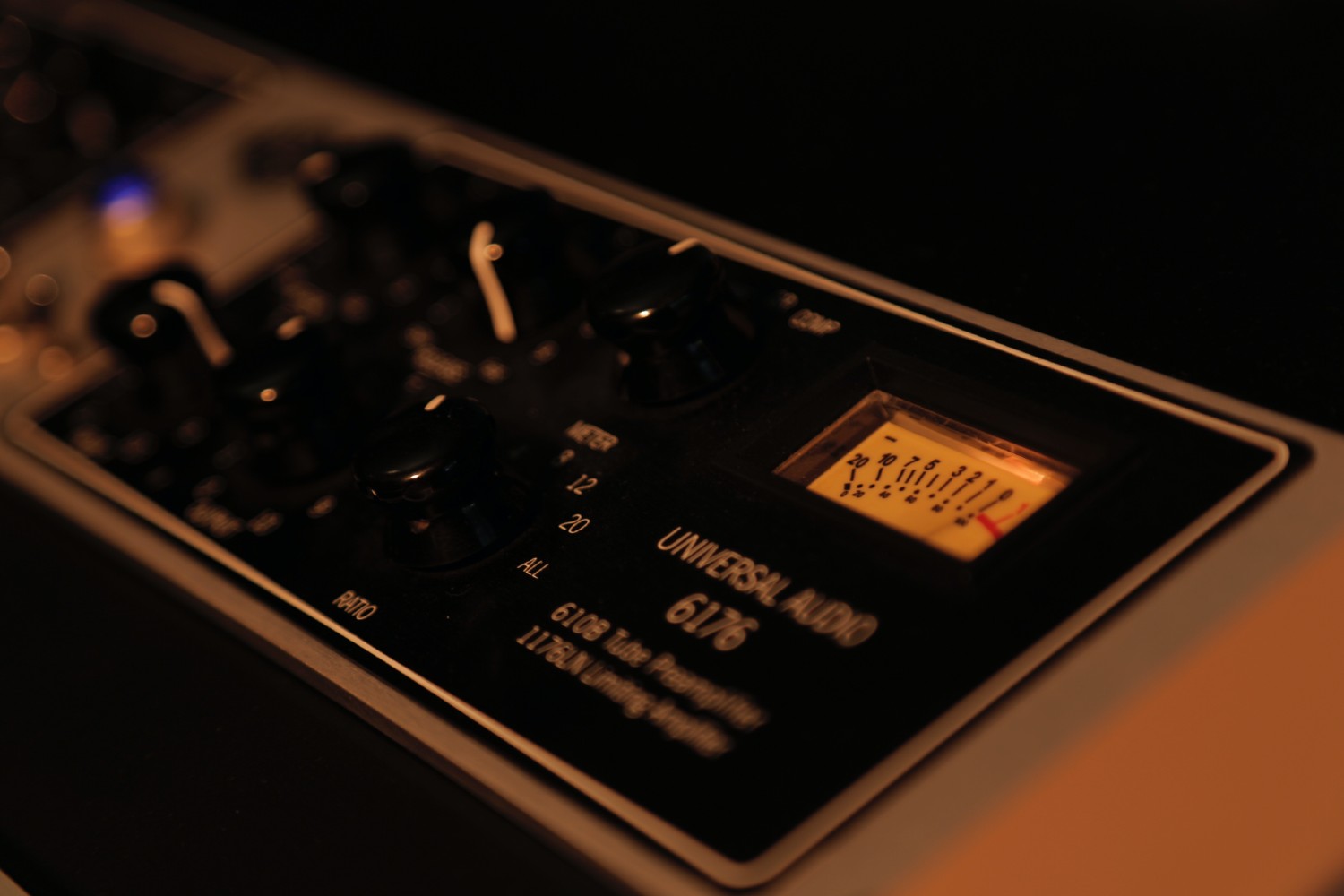A complete guide to sound compression and dynamics.
It’s hard to talk about electronic music without mentioning an audio compressor. Most people probably associate audio compression with the ‘pumping’ characteristics made popular by acts like Daft Punk, but that’s not really their intended function in most cases. So I figure it’s high time we run through what a compressor is.
A compressor is a device that reduces the dynamic range of an audio signal. Or to put it plainly, it’s used to make the loud bits quieter and the quieter bits louder. On guitars for example, they’re often used to increase the sustain of a note without getting the volume spike caused by hitting the strings harder. The compressor will limit the initial volume spike of the plucked string and boost the volume of the string ringing out – handy for solos and other melodic parts.
Where things get more complex is understanding the controls available on compressors, how to use them, and what types of compressors are available to use, which we will cover today.
Summary:
- Compressors control the dynamic range of an audio signal and can be used in a variety of ways to tighten up your audio signal.
- Common terms associated with compressors include threshold, attack time, release time, ratio and output gain.
- The main types of compressors are tube, optical, field effect transistor and voltage controlled amplifier.
Read more features, columns and interviews here.
Compressor controls and what to do with them
The threshold is the level at which compression begins to occur, i.e. if your threshold is set to -10dB no compression will occur until your signal’s volume rises above -10dB.
Attack time is the time it takes for compression to kick in when the signal hits your threshold. This is a matter of microseconds, but you’d be surprised how much it can change the sound. For example, having a slower attack time on your drums such as 75ms will let a super brief transient through before compression sucks the volume down. That may not sound ideal, but letting that brief signal through can create the impression that your drums are really smacking hard.
Compression ratio is the level of attenuation your signal receives once it reaches the threshold. If a signal goes 2dB beyond your threshold and the ratio is set to 2:1, the signal will be attenuated to 1dB above the threshold. If it’s 8dB above, it would be reduced to 4dB above, or 4:1 reduced to 2dB above, etc. Many compressors have an ∞:1 setting, which is basically the compressor doubling as a limiter – it ensures the signal does not exceed the threshold.
Release time is, as you might expect, the time it takes to release the compression effect once the signal amplitude drops below the threshold. This is generally slower than attack time as a fast release tends to create an un-musical pumping effect. A longer slope back to the uncompressed sound means it’s more difficult for the listener to detect. On the flipside, an exaggerated longer release time can be used as its own rhythmic effect.
Once you’ve applied your compression, you’ll likely find the overall volume of your signal has suffered, since all you’ve done is reduce the amplitude of its loudest parts. That’s where output gain comes into play. Boosting this a few decibels will give you back your volume, but now with a less dynamic signal – the loudest parts will be quieter and the quiet parts louder.
I’ve obviously simplified things here, but if you can wrap your head around those concepts, then you’re well on your way to grasping compression. As with all audio lessons, hearing is understanding, so experiment and experiment some more.
That’s only part of the story, though; over time, a few different types of compressors have emerged as technology has evolved. Many compressors have a distinctive sound colouration or feature set that makes them more suited to a particular application. Let’s go through a few of the main compressor types you’ll see in the wild.
Tube or Variable-Mu compressors
These use tubes (valves) in the circuitry and amplification, and have a fairly unique characteristic in that the compression is not linear – as the amplitude of your signal goes beyond the threshold, the ratio of attenuation increases, creating a desirable smoothness.
They’re the oldest compressor design, having originated in the ‘50s, and have a distinct ‘vintage’ sound colouration. They are, by modern standards, slow but still useful as a ‘glue’ compressor – applying a sheen and smoothness to a group of sounds. The most famous example is likely the behemoth Fairchild 670, used on many of The Beatles’ recordings.
Optical compression
This is another old technology that came around in the early ‘60s, but certainly one that left its mark. It consists of a system in which the amplitude of incoming audio affects how brightly a light element lights up – controlling how much a light cell attenuates the audio signal. This made them faster than tube compressors, but with a distinctive ‘soft-knee’ in the attenuation.
Many models still used tubes in the output amplification. Perhaps the most famous and common example is the Teletronix/Universal Audio LA-2A. Originally introduced in 1965, they’re a versatile unit, commonly used to bring a nice vintage bite and punch to instruments like drums and a creamy warmth on vocals.
FET (Field Effect Transistor) compression
Introduced with solid state circuits to compression, and with it, incredibly fast attack times. The first and still popular FET compressor was the Universal Audio 1176 which blew minds with its 20 microsecond attack time. FET compressors tend to have a brighter and more focused sound, which makes them less suitable for mix buss or master compressors, and more suitable for aggressive use on drums and rhythm – getting that big punch and ‘whack’.
VCA (Voltage Controlled Amplifier) compressors
These are your workhorses used more for utility than sound colouration. They are transparently fast and will tame the wild peaks of your track without affecting its overall sound too much. These tend to have the most controls and sound sculpting capabilities, and won’t make themselves known in a mix unless you really want them to. Having said that, there is a vast range of VCA compressors on the market, and there are many like the SSL and API models that have a distinctive sound that many top engineers find desirable.
With all this information, we hope you now have a better understanding of what a compressor is, how it functions and what type of compressor you can choose to best apply dynamics to your audio signals.
Check out more compressor talk on the iZotope website.







